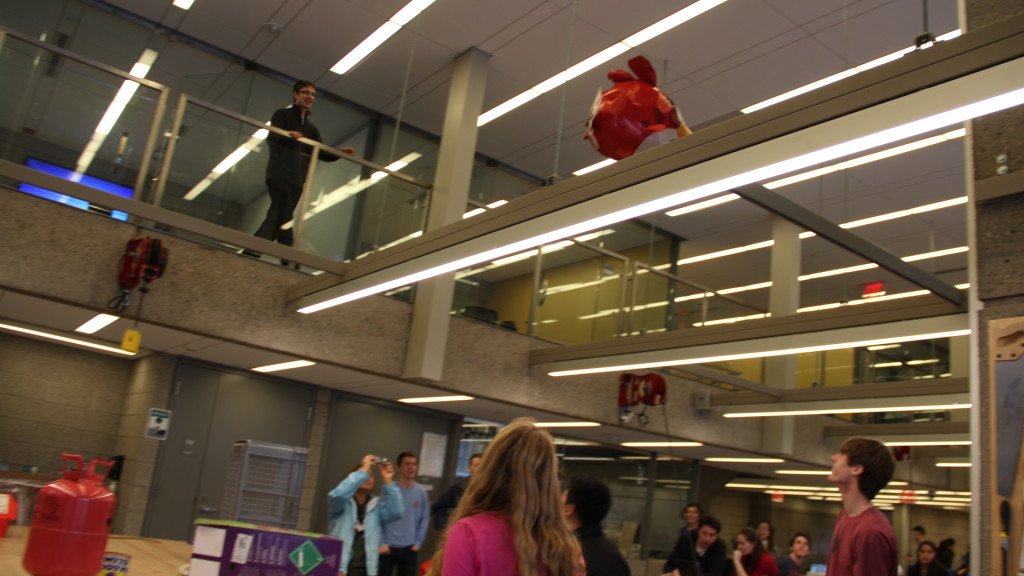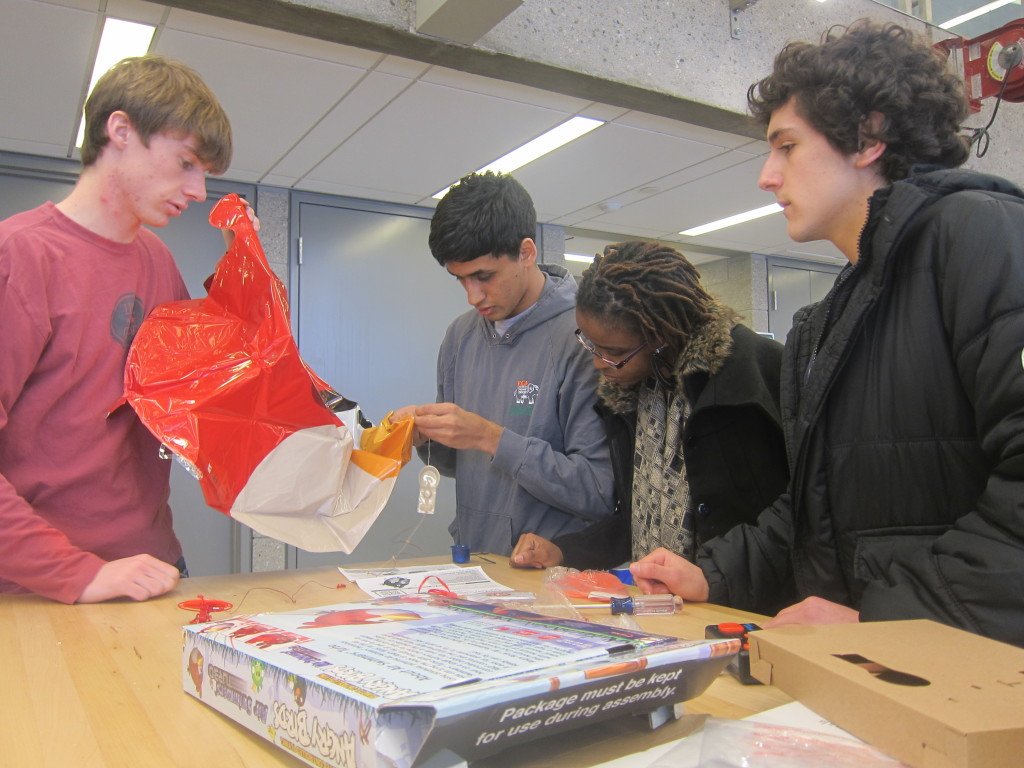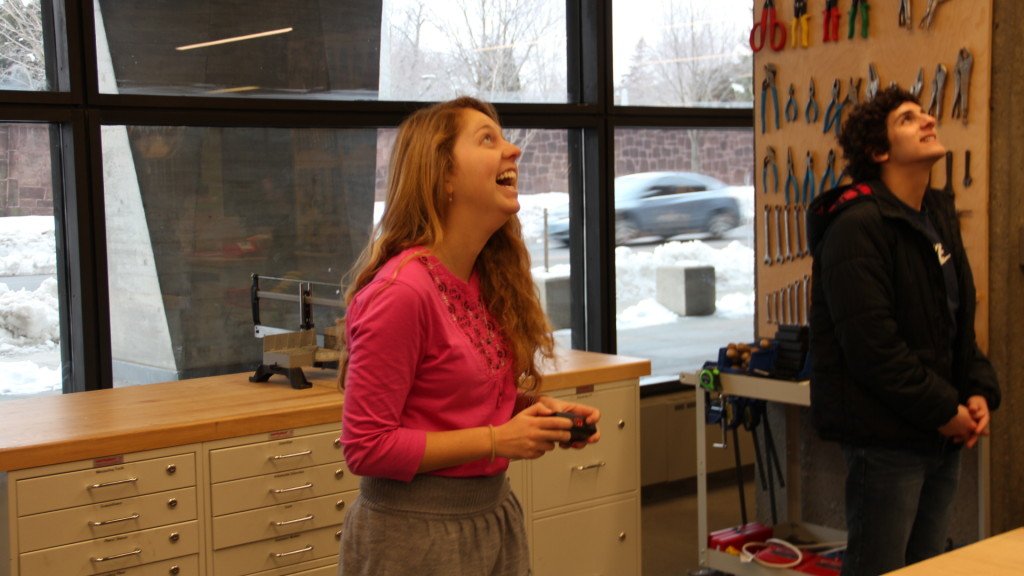Lighter than Air
Purpose
The Lighter than Air UAV project was intended to provide less experienced YUAA members with the opportunity to design and build a competition-ready UAV (Unmanned Aerial Vehicle). Lighter than Air was an aerospace design competition sponsored by the American Society of Mechanical Engineers (ASME).
Design Specifications
The competition involved the design and construction of a small UAV (unmanned aerial vehicle) to carry a cargo through two gates, see below, drop a payload and return to the starting point. The YUAA team designed and built the propulsion and control system for the vehicle. Competition specs also required the UAV to be battery-powered and controlled through a wireless transmitter/radio receiver link. Scoring for the competitions depended on both accuracy and speed.
Blimp Construction
The original design involved a blimp structure with angled fans and a superstructure, but, after weeks of prototyping and designing, the team had to think fast when their structure proved too heavy for the fans and helium to lift. The dedicated members set to it and quickly redesigned their blimp based using a combination of a tail-like rudder and fans.
Competition
The project team attended the Student Design Competition hosted by the American Society of Mechanical Engineers (ASME) and Drexel. The challenge posed was to navigate an obstacle course by traveling through two hoops, dropping a payload, and returning to the original position, earning points for each obstacle they completed. The team of mostly beginners faced a room full of complex quadcopters and octocopters. However the team’s minimalist and careful design proved fruitful. Of the teams who competed, YUAA was one of only two teams who navigated the course without crashing. The team successfully made it through a hoop, dropped their payload, and returned to start with plenty of time to spare. Unfortunately, due to miscommunication, the team did not realize they had to fly through both hoops and were unable to complete the course before the blimp’s battery died. However, the team went above and beyond their goals for the competition, all while being one of the only teams not to destroy their craft during their timed flight.


